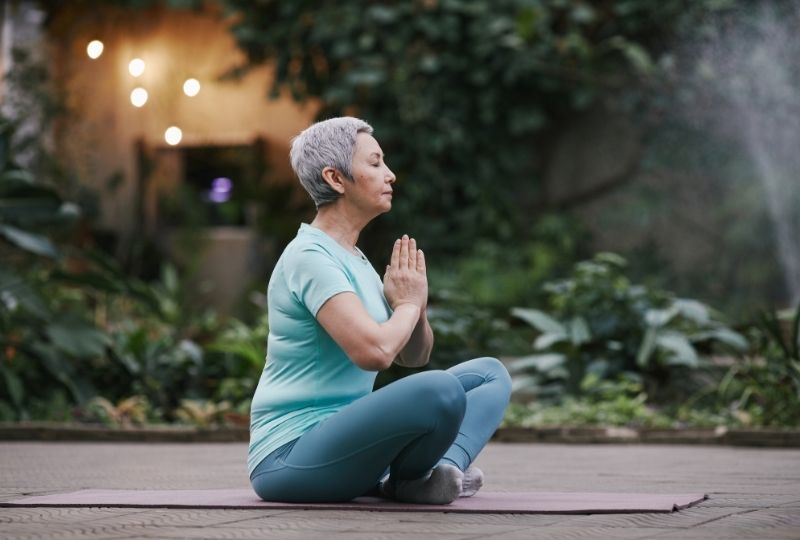Emotional Freedom Techniques (EFT), also known as Tapping, is a simple yet powerful practice that helps release stress, reduce anxiety, and improve overall well-being. It involves lightly tapping specific points on the body while focusing on an emotional challenge, allowing you to reprogram negative thought patterns and restore emotional balance.
In this guide, you’ll learn how to practice EFT step by step and how to integrate it into your daily routine for mental and emotional well-being.
How EFT (Tapping) Works
EFT is based on the idea that emotional distress and limiting beliefs create energy blockages in the body. By tapping on specific meridian points, similar to acupuncture, EFT helps release negative emotions and restore a sense of calm.
✅ Reduces stress and anxiety → Lowers cortisol levels and promotes relaxation.
✅ Releases emotional blocks → Helps process past experiences and negative thoughts.
✅ Increases self-awareness → Encourages emotional healing and clarity.
✅ Boosts confidence and self-acceptance → Supports a positive mindset.
Now, let’s go through a step-by-step process to practice EFT.
Step-by-Step Guide to EFT (Tapping)
Step 1: Identify the Issue
Choose a specific issue or emotion that you want to address. It could be anxiety, stress, fear, a painful memory, or a negative belief.
🔹 Example: “I feel anxious about my job interview.”
Step 2: Rate the Intensity of the Emotion
On a scale of 0 to 10, rate how intense the feeling is, with 0 = no distress and 10 = extreme distress.
🔹 Example: “My anxiety about the job interview is at an 8.”
Step 3: Create a Setup Statement
The setup statement acknowledges the problem while affirming self-acceptance. It follows this structure:
👉 “Even though I feel [emotion], I deeply and completely accept myself.”
🔹 Example: “Even though I feel anxious about my job interview, I deeply and completely accept myself.”
Step 4: Start Tapping on Meridian Points
Using two or three fingers, gently tap each point 5–7 times while repeating your setup statement or a related phrase.
✅ Tapping Points:
- Side of the Hand (Karate Chop Point) – Outer edge of the palm.
- Eyebrow – Inner corner of the eyebrow.
- Side of the Eye – Outer corner of the eye socket.
- Under the Eye – On the cheekbone, below the eye.
- Under the Nose – Between the nose and upper lip.
- Chin – Center of the chin.
- Collarbone – Just below the collarbone.
- Under the Arm – About four inches below the armpit.
- Top of the Head – Center of the scalp.
🔹 Example Phrases to Say While Tapping:
- “Even though I feel anxious, I choose to relax.”
- “I am safe, and I trust the process.”
- “I release this fear and embrace confidence.”
Step 5: Reassess the Intensity
After one round of tapping, take a deep breath and rate your emotion again from 0 to 10.
🔹 If the intensity is still high, repeat the process with a modified statement:
👉 “Even though I still feel some anxiety, I deeply and completely accept myself.”
Step 6: Repeat Until You Feel Relief
Continue tapping until your distress level drops to 0 or a comfortable level.
When to Use EFT for Maximum Benefits
🔹 Before stressful events → Meetings, interviews, exams, or social situations.
🔹 During moments of anxiety → To calm overwhelming emotions.
🔹 As a daily self-care practice → To maintain emotional balance.
🔹 To release limiting beliefs → Overcome self-doubt and fear.
Tips for Making EFT a Daily Habit
✅ Tap in the morning → Start your day feeling calm and focused.
✅ Combine EFT with deep breathing → Enhances relaxation.
✅ Use it before bedtime → Improves sleep and reduces nighttime stress.
✅ Be patient → Emotional shifts may take time, but consistency is key.
Final Thoughts
EFT (Tapping) is a simple and effective tool for managing stress, anxiety, and emotional challenges. By making it a regular practice, you can create a more balanced, peaceful, and positive mindset.
Will you try EFT today? What emotional block would you like to release? 😊
